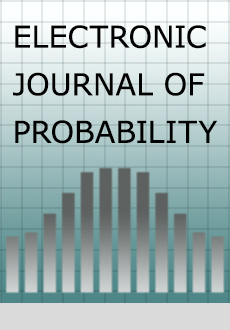Abstract
A two-type infinite-measure-valued population in $R^2$ is constructed which undergoes diffusion and branching. The system is interactive in that the branching rate of each type is proportional to the local density of the other type. For a collision rate sufficiently small compared with the diffusion rate, the model is constructed as a pair of infinite-measure-valued processes which satisfy a martingale problem involving the collision local time of the solutions. The processes are shown to have densities at fixed times which live on disjoint sets and explode as they approach the interface of the two populations. In the long-term limit (in law), local extinction of one type is shown. Moreover the surviving population is uniform with random intensity. The process constructed is a rescaled limit of the corresponding $Z^2$-lattice model studied by Dawson and Perkins (1998) and resolves the large scale mass-time-space behavior of that model under critical scaling. This part of a trilogy extends results from the finite-measure-valued case, whereas uniqueness questions are again deferred to the third part.
Citation
Donald Dawson. Alison Etheridge. Klaus Fleischmann. Leonid Mytnik. Edwin Perkins. Jie Xiong. "Mutually Catalytic Branching in The Plane: Infinite Measure States." Electron. J. Probab. 7 1 - 61, 2002. https://doi.org/10.1214/EJP.v7-114
Information





